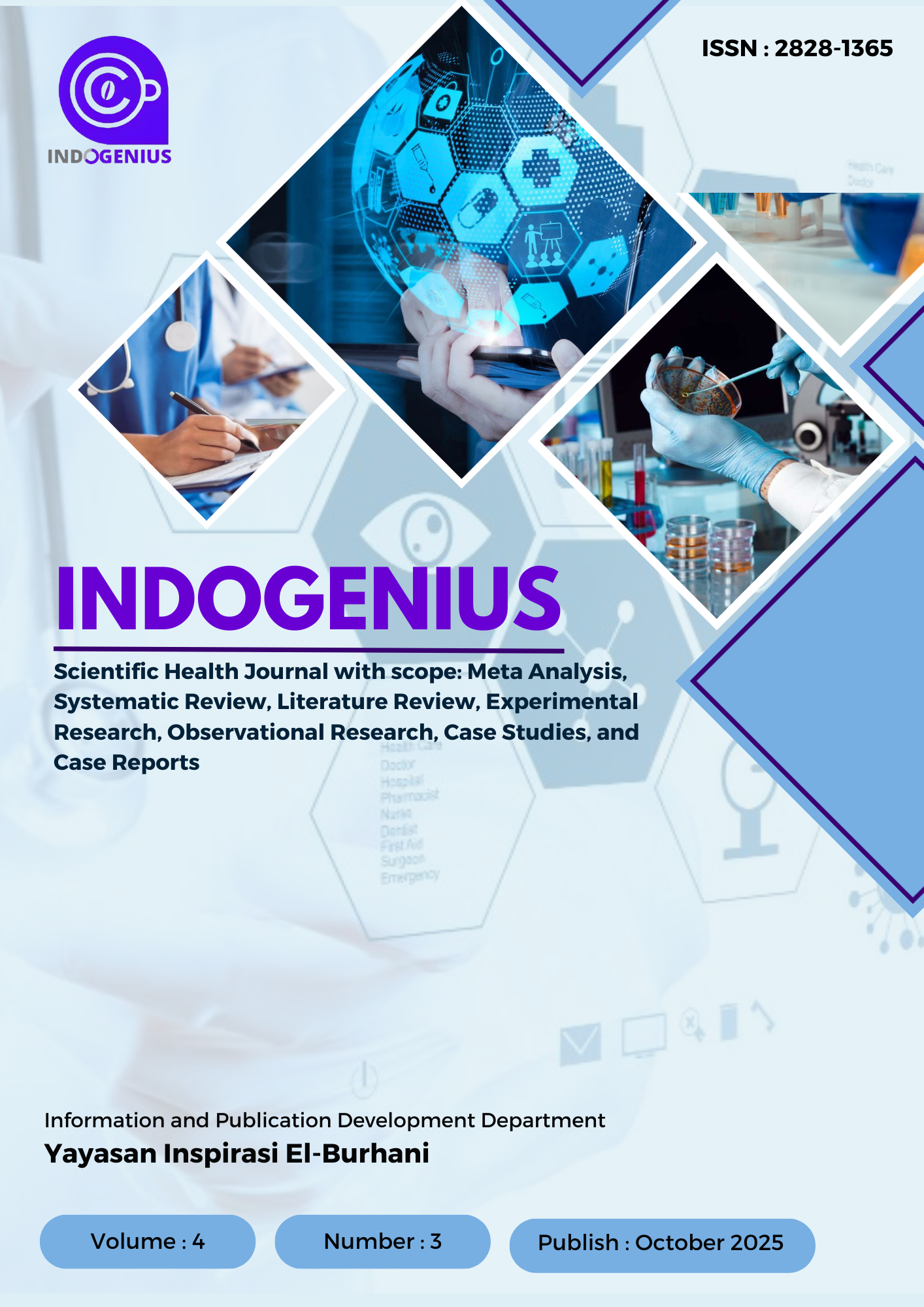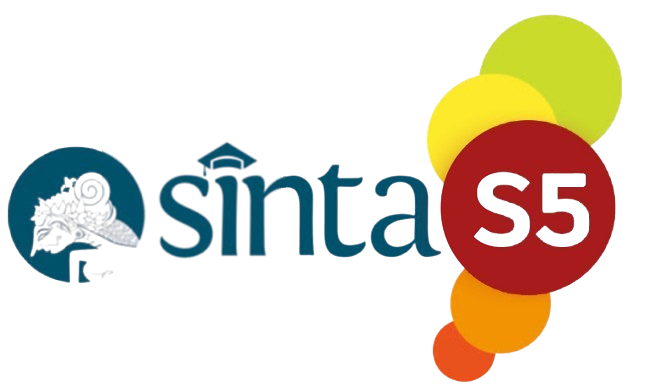Literature Review on the Materials, Advantages, and Disadvantages of Suturing Training Tools in Health Education
DOI:
https://doi.org/10.56359/igj.v4i3.661Keywords:
Suture Training Tools, Health Education, Literature ReviewAbstract
Background & Objective: Suturing skills are a fundamental competency in both nursing and medical education. To support the mastery of this skill, effective, realistic, and pedagogically appropriate training tools are essential. Various materials have been employed to create suture training models; however, no single material has emerged as universally ideal or standardized globally. Aims: This review aims to identify the types of materials used in suturing training tools, evaluate their strengths and limitations, and assess their contribution to the global development of simulation-based training devices.
Method: This study is a literature review analyzing five recent and relevant scientific articles. The selection criteria included thematic relevance, publication year, and a focus on evaluating suture training tools or materials. Analysis was conducted using the JBI Critical Appraisal Checklist for Case Reports. This literature review highlights aspects such as material properties, advantages, disadvantages, and implications for educational practice.
Result: The review identified five primary categories of materials used in suture training tools: (1) polydimethylsiloxane (PDMS) with silk fibers, (2) silicone pads and polyurethane foam, (3) porcine skin, sponges, and commercial pads, (4) improvised combinations such as citrus fruits and tea towels, and (5) synthetic polyurethane-based skin. Each material offers specific benefits, such as high realism, durability, or affordability. Nevertheless, all materials exhibit limitations, including ethical concerns, hygiene issues, and limited anatomical fidelity.
Conclusion: This literature review indicates that no single material fully satisfies all requirements for suturing training. A combined and contextual approach considering learning objectives, cost, and local availability emerges as a pragmatic alternative. The contribution of this review lies in strengthening the global research direction toward the development of accessible, inclusive, and adaptable medical simulation tools tailored to diverse healthcare education settings worldwide.
Downloads
References
Alves de Oliveira, M., Arcanjo, A., Castro, F., Fernandes, J. C. H., & Fernandes, G. V. O. (2024). Evaluating and Comparing the Tensile Strength and Clinical Behavior of Monofilament Polyamide and Multifilament Silk Sutures: A Systematic Review. Surgeries, 5(2), 350–366.
Antonopoulos, I., Tzortzis, A.-S., Pechlivanidou, E., & Troupis, T. (2023). A Simplified Three-Layered Suturing Training Pad for Undergraduate Medical Students: A Technical Note. Cureus, 15(10), 1–5. https://doi.org/10.7759/cureus.47330
Baillie, S., Christopher, R., Catterall, A. J., Kruydenberg, A., Lawrenson, K., Wonham, K., Kilfeather, P., & Warman, S. (2020). Comparison of a silicon skin pad and a tea towel as models for learning a simple interrupted suture. Journal of Veterinary Medical Education, 47(4), 516–522. https://doi.org/10.3138/JVME.2018-0001
Barker, T. H., Stone, J. C., Sears, K., Klugar, M., Tufanaru, C., Leonardi-Bee, J., Aromataris, E., & Munn, Z. (2023). The revised JBI critical appraisal tool for the assessment of risk of bias for randomized controlled trials. JBI Evidence Synthesis, 21(3). https://doi.org/10.11124/JBIES-22-00430
Byrne, M., surgery journal, A. A.-A., & undefined 2019. (2019). The surgical suture. Academic.Oup.Com. https://academic.oup.com/asj/article-abstract/39/Supplement_2/S67/5377467
Chao, K., Elsensohn, A. N., Singh, G., & Jiang, S. I. B. (2022). Suture materials and techniques for optimal cutaneous wound cosmesis: A systematic review. Journal of the American Academy of Dermatology, 86(5), 1136–1137. https://doi.org/10.1016/j.jaad.2021.04.035
Gonzalez-Navarro, A. R., Quiroga-Garza, A., Acosta-Luna, A. S., Salinas-Alvarez, Y., Martinez-Garza, J. H., de la Garza-Castro, O., Gutierrez-de la O, J., de la Fuente-Villarreal, D., Elizondo-Omaña, R. E., & Guzman-Lopez, S. (2021). Comparison of suturing models: the effect on perception of basic surgical skills. BMC Medical Education, 21(1), 1–11. https://doi.org/10.1186/s12909-021-02692-x
Gusman, D. N. (2012). Suture materials and techniques. Lower Extremity Soft Tissue & Cutaneous Plastic Surgery, 77–100.
Hilton, P., & Monaghan, J. M. (2018). Instruments, operative materials and basic surgical techniques. Bonney’s Gynaecological Surgery, 17.
Kang, S. J., Choi, P. J., Chiang, Z. W., Labib, K., & Clements, N. (2019). Homemade Suture Pad Construction and Efficacy for Low- Cost Training. April 2018.
Khan, M. S., Bann, S. D., Darzi, A., & Butler, P. E. M. (2003). Use of suturing as a measure of technical competence. Annals of Plastic Surgery, 50(3), 304–308. https://doi.org/10.1097/01.SAP.0000037271.26659.F4
Khantasa-ard, P. (2024). Polyurethane Leather as a Suture Training Model. Cureus, 16(10), 1–8. https://doi.org/10.7759/cureus.71182
Konsil Tenaga Kesehatan Indonesia. (2022). Tenaga Kesehatan Indonesia.
Kuzu, T. E. (2022a). Comparison Tensil Stength Of Different Sutur Materials. Cumhuriyet Dental Journal, 24(4), 355–360. https://doi.org/10.7126/cumudj.978167
Kuzu, T. E. (2022b). Comparison tensile strength of different sutur materials. Cumhuriyet Dental Journal, 24(4), 355–360.
Middleton, R. (2006). Suturing as an advanced skill for Registered Nurses in the emergency department. Australian Journal of Rural Health, 14(6), 258–262. https://doi.org/10.1111/j.1440-1584.2006.00826.x
Page, M. J., McKenzie, J. E., Bossuyt, P., Boutron, I., Hoffmann, T. C., Mulrow, C. D., Shamseer, L., Tetzlaff, J. M., Akl, E., Brennan, S. E., Chou, R., Glanville, J., Grimshaw, J. M., Hróbjartsson, A., Lalu, M. M., Li, T., Loder, E. W., Mayo-Wilson, E., McDonald, S., … Moher, D. (2021). The prisma 2020 statement: An updated guideline for reporting systematic reviews. In Medicina Fluminensis (Vol. 57, Issue 4, pp. 444–465). https://doi.org/10.21860/medflum2021_264903
Prasomsin, W., Prastowo, R. B., Okhawilai, M., Jubsilp, C., & Rimdusit, S. (2021). Development of a suture pad for medical training from silk fiber reinforced polydimethylsiloxane composite. Engineering Journal, 25(5), 71–79. https://doi.org/10.4186/ej.2021.25.5.71
Regula, C. G., & Yag-Howard, C. (2015). Suture products and techniques: What to use, where, and why. Dermatologic Surgery, 41(10), S187–S200. https://doi.org/10.1097/DSS.0000000000000492
Sulistiyowati, N., & Supratman, S. (2024). The relationship between nurse competence and patient satisfaction. Jurnal EduHealt, 15(1), 474–480. https://doi.org/10.54209/eduhealth.v15i01
Suwardianto, H., & Astuti, V. W. (2020). Competency In Critical Care Nursing With Approach Methods Journal Sharing of Critical Care (JSCC) In Nursing Profession Students. STRADA Jurnal Ilmiah Kesehatan, 9(2), 686–693. https://doi.org/10.30994/sjik.v9i2.361
Szabelski, J., & Karpiński, R. (2024). Short-Term Hydrolytic Degradation of Mechanical Properties of Absorbable Surgical Sutures: A Comparative Study. Journal of Functional Biomaterials, 15(9), 273.
Szarmach, R. R., Livingston, J., Rodeheaver, G. T., Thacker, J. G., & Edlich, R. (2017). A Review on the Innovative Surgical Suture and Needle Evaluation and Selection Program. Journal of Long-Term Effects of Medical Implants, 27(2–4).
Downloads
Published
How to Cite
Issue
Section
License
Copyright (c) 2025 Sulistia Nur, Etanaulia Marsim, Riki Ukhtul Fitri, Hartanto Prawibowo

This work is licensed under a Creative Commons Attribution 4.0 International License.

















